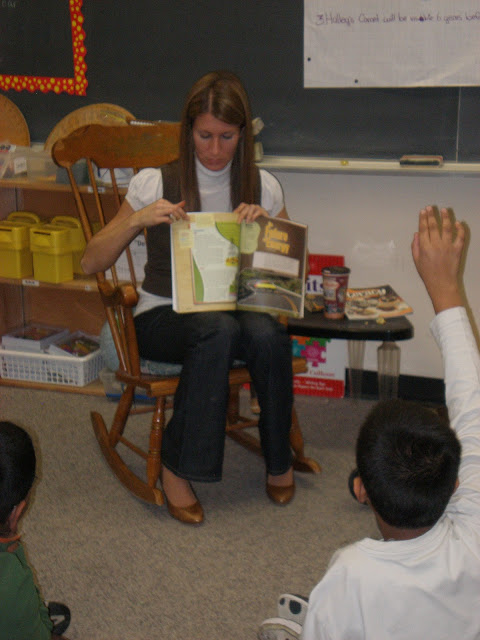Sometimes, guided reading is thought of as a component of reading saved for the primary grades. Essentially, guided reading is a way to teach students in small groups based on needs and/or abilities and is integral beyond Grade 3 to address the learning needs of your students.
Here is a quick summary from eWorkshop:
Guided reading is the bridge between shared reading and independent reading. It allows teachers to help students make the transition from teacher modelling to student independence. In guided reading, the teacher scaffolds the learning of a small group of students as they apply strategies previously taught during read-alouds and shared reading to an unfamiliar, but carefully selected, text.
More information and resources can be found at: eWorkshop
In Laura's Grade 6 class, she uses guided reading in her Reading Workshop to be able to meet in small groups with students to address student needs, scaffold strategies or cover reading content from Science and Social Studies.
Guided reading is just one part of her literacy block, as she needs to leave time to integrate writing, oral language and media literacy into her program.
Here is a copy of her guided reading rotations:

Laura meets with one of her groups and uses the core resource, Nelson Literacy, to engage in learning about Electricity, focusing on using text features when reading non-fiction. She used this reading with each group, to connect to their work in Science, and help them understand the elements of non-fiction reading.





While meeting with a group, the key question always arises, "what is the rest of the class doing?" Laura has created three activities that are important to her and her literacy program. Instead of having the entire class engage in these activities on the same day, this schedule allows students to work on each assignment each day. They are encouraged to work together and help each other, if necessary.
Below are photos of her three activities:
Response Journal - students write a letter to Laura about what they are reading independently. This structure is taken from Fountas and Pinnell's First 20 Days of Independent Reading. Students read and apply feedback from their previous letters and share their thinking.


Word Study - Laura has students engage in different activities focused on contextual words used and integrated into her program, rather than a prescribed list in a speller. More information about Word Study can be found at: Word Study in Action
Here is an example of her word wall, where she focused on descriptive words and adjectives visually:

This week, she used her Science vocabulary as her focus, and students worked on activities related to these words:



Computers - what do we do with just one, two or three computers in the class? Having students work on them to publish pieces of work is just one way Laura uses her classroom computers. Students can work together to revise/edit their work, or publish a piece, helping one another out. This ensures that the computers are used and an integrated tool in literacy, and students have a chance to word process their work.



Read Aloud - to end the Reading Workshop, Laura brought the class to the carpet to read aloud to them from Maniac Magee, their class novel. This novel is not only used to think aloud and connect to the different strategies taught and used, but it is a time to enjoy a piece of literature together.




No comments:
Post a Comment